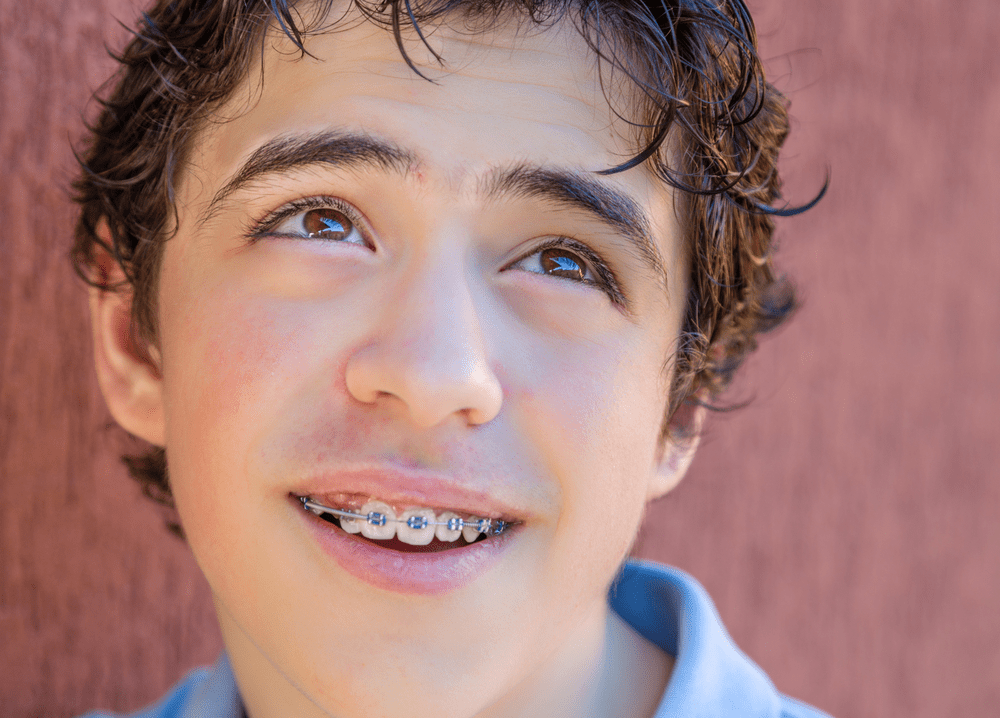It’s not uncommon for our Johnson City Invisalign and braces patients to ask about getting braces on the top teeth only or, less frequently, wondering if they can just have bottom teeth braces or aligners. On the surface, it does make sense. If, say, you’re happy with how your bottom teeth look or you don’t see the point in straightening them since they’re less visible, wouldn’t it be easier to just focus on the top teeth? Well, it can actually be a lot more complicated than that and there are a variety of factors that come into play with single-arch treatment.
Every patient is unique and Dr. Sturgill considers all of the possible outcomes before deciding on a treatment plan, whether it involves one or both arches. The only way to know if it’s a possibility for you is to come in for a consultation. In the meantime, we’ll go over some of the basics concerning one-arch treatment.
What is Single-Arch Treatment?
A dental arch is the U-shaped arrangement of bone, tissue and teeth both on the upper and lower jaw. Getting Invisalign or braces on the bottom teeth only or the top teeth only, instead of both arches, is referred to as single-arch or one-arch treatment. It’s important to keep in mind, however, that an orthodontist isn’t just looking at the teeth in each arch and picking and choosing which ones he or she is going to move.
We’re also concerned with how your top and bottom teeth fit together when they come into contact, which is known as occlusion. You’ve probably heard us use the term malocclusion in orthodontics and this is the medical term for an improper bite, which is what we specialize in fixing. Your bite involves a complex relationship between the jaws and teeth and moving the top or bottom independently affects the whole system.
Occasionally, we’ll do braces on the top teeth first and once we’ve achieved our desired movements, we’ll then use braces or Invisalign on the bottom teeth too – or vice versa – but this is different from single-arch treatment since we’ll get to both during the process. True one-arch treatment is effective in only a limited number of cases and can only be done after your doctor thoroughly assesses your bite with an exam and x-rays.
Who is a Candidate for Single-Arch Braces or Invisalign Treatment?
Occasionally, there are patients who could achieve good results with braces or Invisalign on just the top teeth or just the bottom teeth. This approach is something that’s considered on a case-by-case basis and single-arch treatment works better when a patient has very mild crowding or spacing or has already had orthodontic treatment but experienced a relapse. When we make space between crowded or crooked teeth, they have a natural tendency to shift forward as they straighten.
The opposite is true when we close gaps between teeth that are widely spaced; they shift backward. So, if you love how your bottom teeth look, you have minor spacing in the upper arch and a slight overbite, in theory, getting braces for the top teeth only (or Invisalign) could close the gaps, moving the teeth back, which would reduce your overbite. However, many times, the upper space forms because the bite is off and the front teeth hit too hard, creating pressure on the upper teeth to space.
Another situation where we sometimes address one arch is with younger patients who are undergoing early, interceptive orthodontic treatment. Depending on our aim, phase I could involve getting braces on the bottom teeth only or just top the teeth. Yet, we’d be doing this to set the stage for more comprehensive treatment on both arches in phase II.
[button color=”accent-color” hover_text_color_override=”#fff” size=”medium” url=”../schedule-free-consultation/” text=”Want braces on your top or bottom teeth? Book a free consultation” color_override=””]
The Challenges of Invisalign or Braces on Just the Top or Bottom Teeth
Treating only one arch might make the teeth in that arch appear straighter but it can throw off the bite and when the bite is misaligned, it may lead to issues with chewing and speaking, jaw, head and neck pain, uneven wear and other concerns. For example, just using Invisalign aligners on the top teeth to fix crowding will make an overbite much worse. Think of your teeth fitting together like a puzzle and if you treat only one arch, it is similar to putting a puzzle together with the ability to only move half the puzzle pieces.
Dealing with a single arch means the other is staying exactly where it is and, often, this isn’t feasible for keeping the teeth and jaws aligned and working together correctly. Our bites deepen as we get older, so it’s likely that there won’t be enough room between the front of the bottom teeth and the back of the top teeth to comfortably fit braces as the teeth move, which is why issues like a deep bite should involve both arches.
There are a lot of moving parts when it comes to creating a beautiful, healthy smile. At Sturgill Orthodontics, we have the expertise and knowledge to determine the best course of treatment for your individual needs, whether it’s single-arch treatment or not.
